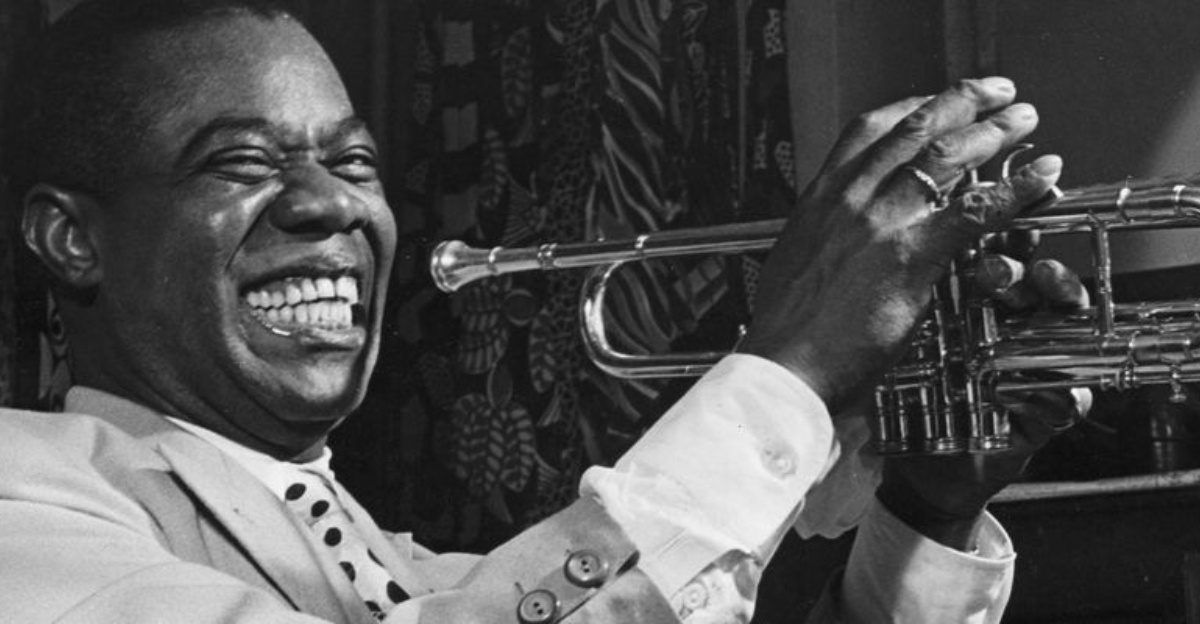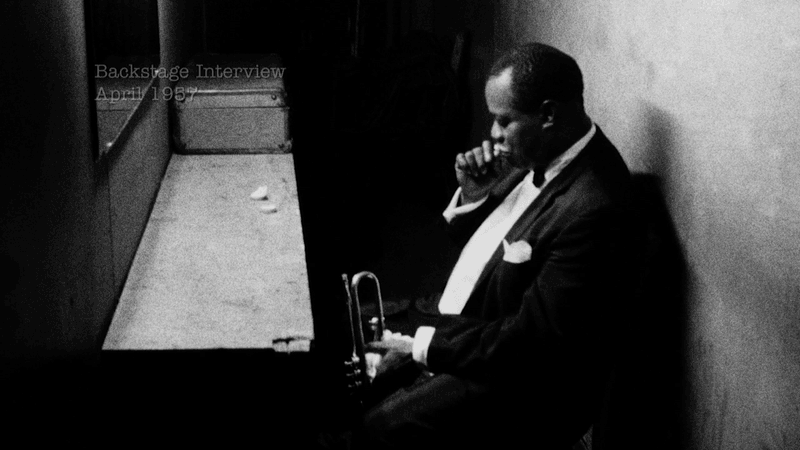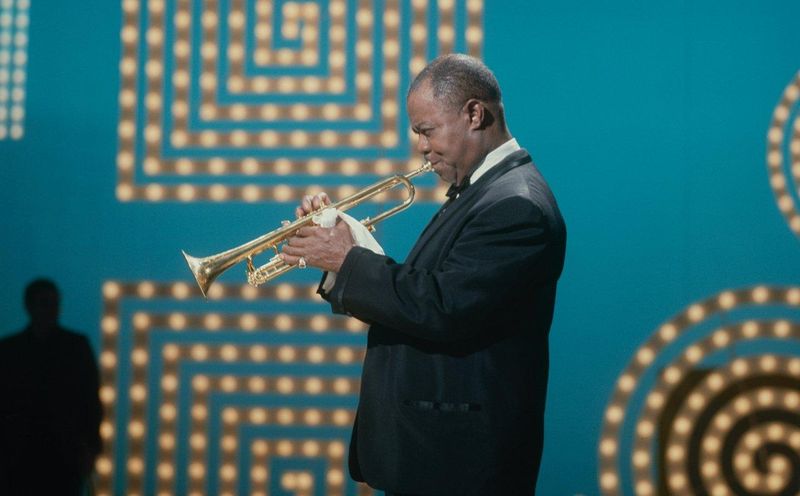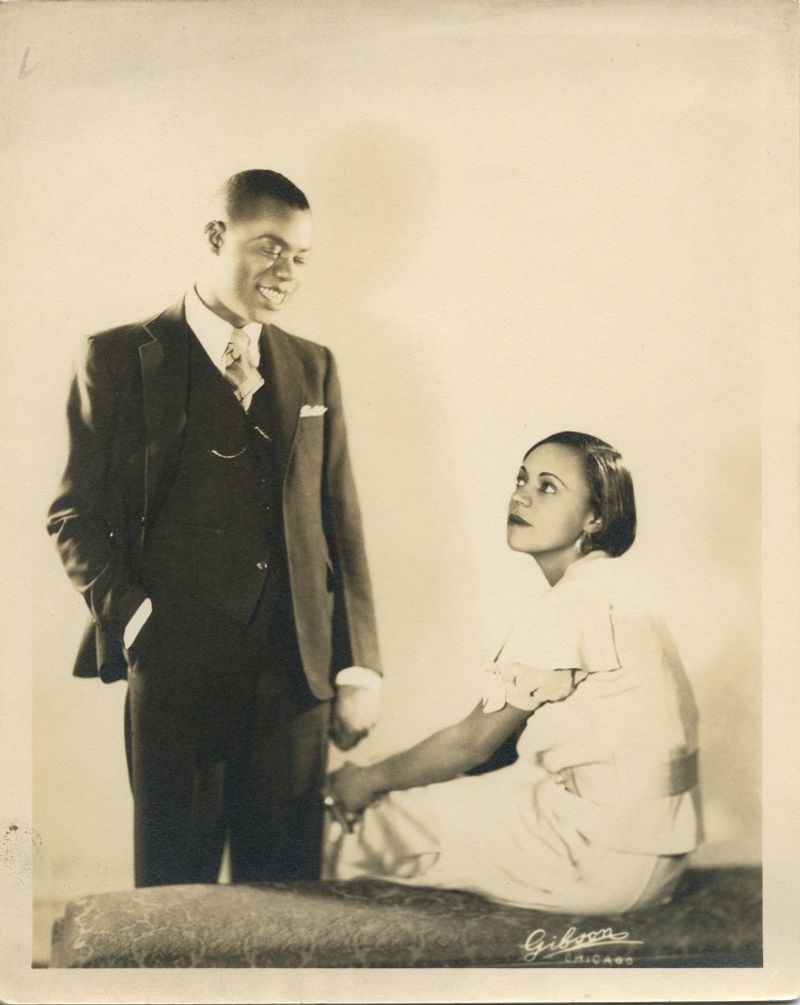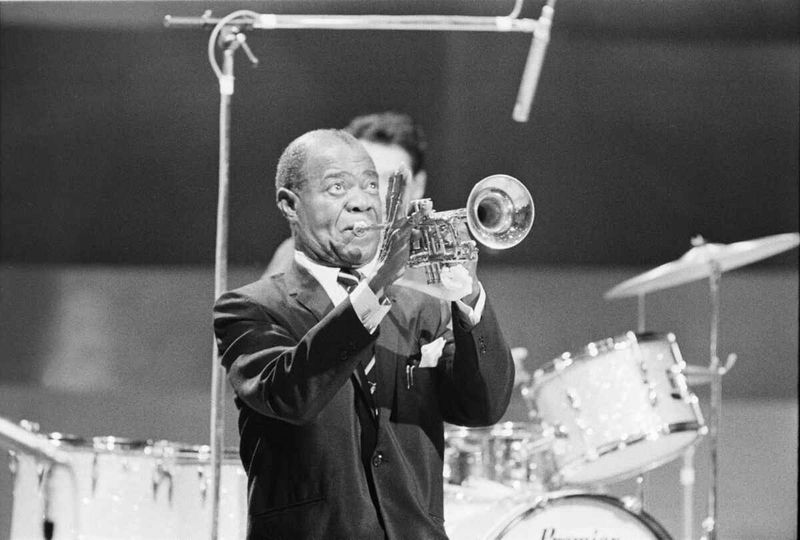Explore the lesser-known struggles of Louis Armstrong, the legendary jazz musician whose vibrant smile masked a lifetime of hardship and challenges.
While his music brought joy to millions, his personal journey was marked by poverty, racism, and personal struggles. Here are nine poignant facts about the man behind the trumpet.
1. He Grew Up in Extreme Poverty
Louis Armstrong’s childhood was set against the backdrop of New Orleans’ tough “Battlefield” neighborhood. Born in 1901, his early life was steeped in financial struggle. His father left when he was young, and his mother often relied on his grandmother for help.
Despite these hardships, Armstrong’s resilience shone as he took on various odd jobs to make ends meet. This period of adversity shaped his character, giving him a unique perspective on life that he later infused into his music. From selling newspapers to hauling coal, young Armstrong’s tenacity laid the foundation for his future success.
2. He Was Arrested at Age 11 for Firing a Gun
At age 11, Louis Armstrong experienced a pivotal moment that would change his life. On New Year’s Eve, he fired a pistol into the air, a gesture of celebration that led to his arrest.
Sent to the Colored Waif’s Home, a reform school, Armstrong discovered music’s transformative power. Here, he learned to play the cornet, setting him on a path towards becoming a jazz icon. This incident, though challenging, proved serendipitous, igniting his lifelong passion for music and providing an escape from his tumultuous surroundings.
3. He Faced Racism His Entire Career
Throughout his illustrious career, Louis Armstrong faced systemic racism, which cast a shadow over his achievements. Despite his fame, he often had to enter venues through back doors and face segregated accommodations.
Armstrong’s universal appeal couldn’t shield him from the harsh realities of racial discrimination. He encountered prejudice both domestically and internationally, reflecting the pervasive inequalities of his time. This persistent challenge, however, fueled his determination and lent a profound depth to his music, making it resonate with audiences across racial divides.
4. He Was Criticized for “Not Doing Enough” for Civil Rights
Louis Armstrong, despite his global acclaim, faced criticism from some quarters for not being outspoken enough on civil rights. This perception weighed on him, especially during pivotal moments like the 1957 Little Rock crisis.
Though some saw him as too accommodating to white audiences, Armstrong made bold statements when it mattered. His public critique of President Eisenhower showcased his willingness to stand for justice. Armstrong’s actions and words, though not always loud, reflected a deep commitment to equality, challenging the notion that he was merely an entertainer without convictions.
5. He Struggled with Chronic Health Issues
Years of grueling tours and a demanding lifestyle took their toll on Louis Armstrong’s health. By the 1950s, he faced significant heart and kidney issues. Despite doctors’ warnings, Armstrong rarely slowed down, driven by an unwavering passion for his craft.
His relentless schedule was both a source of joy and physical strain. Performing was his lifeline, even as it exhausted him. Armstrong’s story is a testament to the burdens artists bear in pursuit of their art, highlighting the personal sacrifices that underpin public success.
6. He Was Exploited Financially in His Early Years
In the early stages of his career, Louis Armstrong faced financial exploitation, a common plight among Black artists of his time. Unscrupulous managers and record labels took advantage of his talent, leaving him with only a fraction of his earnings.
Armstrong’s struggle for financial autonomy was a constant battle. Over time, he learned to advocate for himself, eventually gaining control over his finances. This journey reflects the broader struggle for artists’ rights and the challenges faced by minority performers striving for fair recognition and compensation.
7. His Marriages Were Turbulent and Painful
Louis Armstrong’s personal life was as turbulent as it was illustrious. Married four times, his relationships were marked by a mix of love, conflict, and instability. Each marriage unraveled differently, showing the contrast between his public persona and private struggles.
Behind his infectious smile lay stories of jealousy and heartbreak. The challenges in his personal life were in stark contrast to his career success, painting a fuller picture of the man who dazzled the world from the stage while navigating the complexities of his own heart.
8. He Often Hid Pain Behind Humor
Beneath Louis Armstrong’s radiant smile and captivating humor lay a world of pain. Known for his jovial persona, Armstrong often used humor as a shield against life’s adversities. He once quipped, “My whole life, my whole soul, my whole spirit is to blow that horn.”
This ability to mask his struggles with laughter was both a coping mechanism and a performance tool. Armstrong’s unyielding spirit and infectious personality endeared him to fans, but behind the scenes, he bore the weight of personal and professional challenges with grace and resilience.
9. He Died Still Longing to Perform
Louis Armstrong’s love for music was so profound that he continued performing until the very end. Even as his health declined, Armstrong’s desire to share his music never waned. In 1971, just weeks before his death, he took to the stage one last time.
Though doctors advised against it, the call of the stage was irresistible. Armstrong’s final performances were a testament to his enduring passion. His passing marked the end of an era, but his legacy lives on, inspiring generations of musicians who strive to blend passion with perseverance.
